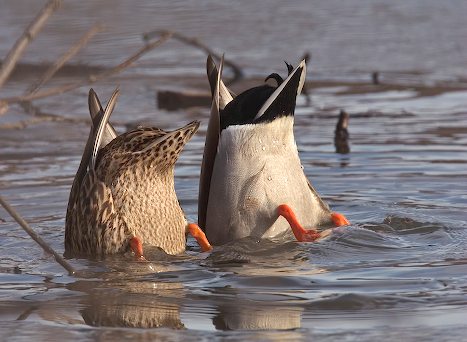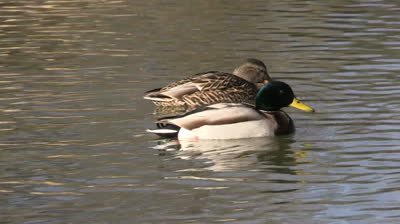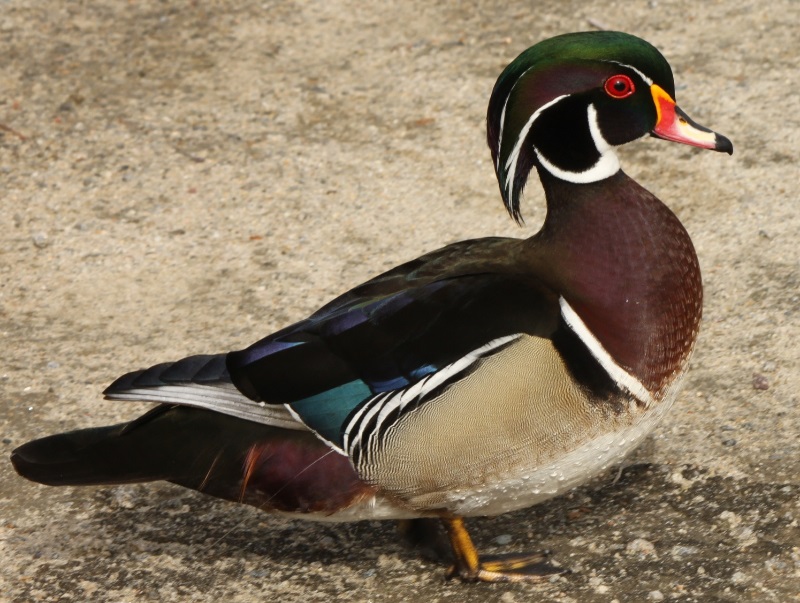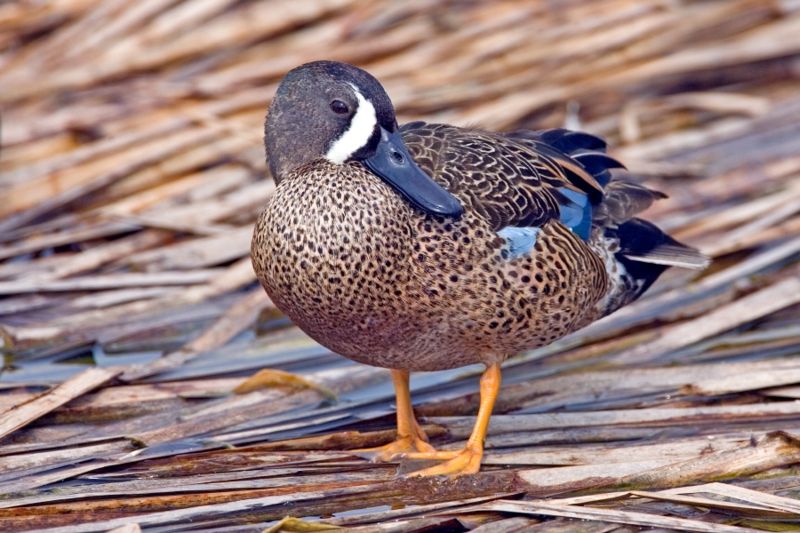The Upside Down Life of Dabbling Ducks
Jul 6th 2020
 While most of us may not be familiar with the term "dabbling duck," we've likely all seen a mallard duck or other type of waterfowl suspended vertically in the water with its head just below the surface and its rear-end in the air. It might appear as if they're swimming or playing, but these beautiful ducks are actually skimming the water with their bills just below the surface in search of edible aquatic plants and insects. Another common term for dabbling duck is a "puddle duck." These nicknames simply refer to the "tipping-up" or dabbling in the water of lakes, puddles, rivers and ponds. These ducks eat a wide range of foods, including vegetation, insects and larvae. The legs and feet are what allow the dabbling ducks to tip up into the water to eat.
While most of us may not be familiar with the term "dabbling duck," we've likely all seen a mallard duck or other type of waterfowl suspended vertically in the water with its head just below the surface and its rear-end in the air. It might appear as if they're swimming or playing, but these beautiful ducks are actually skimming the water with their bills just below the surface in search of edible aquatic plants and insects. Another common term for dabbling duck is a "puddle duck." These nicknames simply refer to the "tipping-up" or dabbling in the water of lakes, puddles, rivers and ponds. These ducks eat a wide range of foods, including vegetation, insects and larvae. The legs and feet are what allow the dabbling ducks to tip up into the water to eat.
Unlike "diving ducks" that have bodies suited for diving deep into the water (such as scaup, redheads, canvas backs and ring-necked ducks ), dabbling ducks have feet that are nearly in the middle of their bodies, which help them to tread water in their comical vertical position. The placement of their feet also allows them to walk fairly easily on land. Dabbling ducks are often seen eating seeds, plants, acorns and nuts in addition to the insects and plants they grab under water.
In all, there are 11 different common types of dabbling ducks that thrive in habitats around North America. They are: American Black Duck, American Wigeon, Blue-Winged Teal, Cinnamon Teal, Gadwall, Green-Winged Teal, Mallard, Mottled Duck, Northern Pintail, Northern Shoveler and Wood Duck. The most iconic and largest dabbling duck is the mallard duck. Mallards are also one of the most common and abundant type of duck in North America.

On average, mallards weigh about 2-3 lbs. and measure about 20-25 inches. The male mallard duck (the drake) has an iridescent emerald green head and neck with a white ring, yellow beak and a mottled brown body. By contrast, the female (hen) is much duller in appearance with mostly brown mottled markings and an orange beak. Both the hen and drake, however, have a gorgeous blue streak just under each wing, which can be spotted while in the air. One of the reasons why mallard ducks are so plentiful is because they're highly adaptable to climate, geography, temperature and diet. Particularly, they love shallow ponds, marshes and wetlands, as those calmer waters tend to produce the most aquatic bugs and plants—more so than fast moving rivers or deeper lakes. Mallards mate in pairs, and while some migrate to warmer temperatures, many are permanent residents in their nested homes throughout the United States.
Unlike the mallard, the wood duck is a dabbling duck that tends to migrate early in the season when the cooler autumn temps begin to drop into the Northern states. Wood ducks are spectacular in appearance and very iconic, as well, with bright green crests on the top of their heads like little avian mohawks. They have orangeish-red bills and eyes, with yellow flanks and a black back. The female is not nearly as striking as the drake, but is just as beautiful with her white belly, and mottled back and sides. Just like the mallards, both sexes have iridescent blue wing patches. Wood ducks love to make their homes high up in trees along the streams and ponds of heavily wooded forests. You'll know them by the "swooshing" sound of their wings as the fly through the trees.

Another commonly-found dabbling duck in North America is the blue-winged teal. These birds are the smallest of the dabbling ducks, weighing in at only a pound. The drake has a very sharp white crest on his face in between his eye and bill, which helps distinguish it from other ducks. It's called a blue-winged teal because of the striking flash of iridescent blue feathers on its wings. On the male drake, you'll also find a stripe of bright green on his wing. The hen has a black line on her face and also sports the teal blue wings, although her's are a duller blue color than that of her male counterpart. Blue-winged teals are also very plentiful in ponds, streams and lakes, but they don't tolerate the cold as well as mallards. These birds will migrate all the way to South America in winter.

If you'd like to catch dabbling ducks in action with their hind legs and webbed feet paddling while they bob up and down in the water looking for food, take a nature walk to a nearby pond or stream or the marshy shore of a lake. You'll likely find them swimming and frolicking around in small flocks in search of food. It will only take a few moments before you see their funny tail feathers pop up in the air when their heads plunk down beneath the water's surface. Repeatedly, they'll dabble down into the water with their tips up, until they've had their fill of plants and insects and finally swim away.

